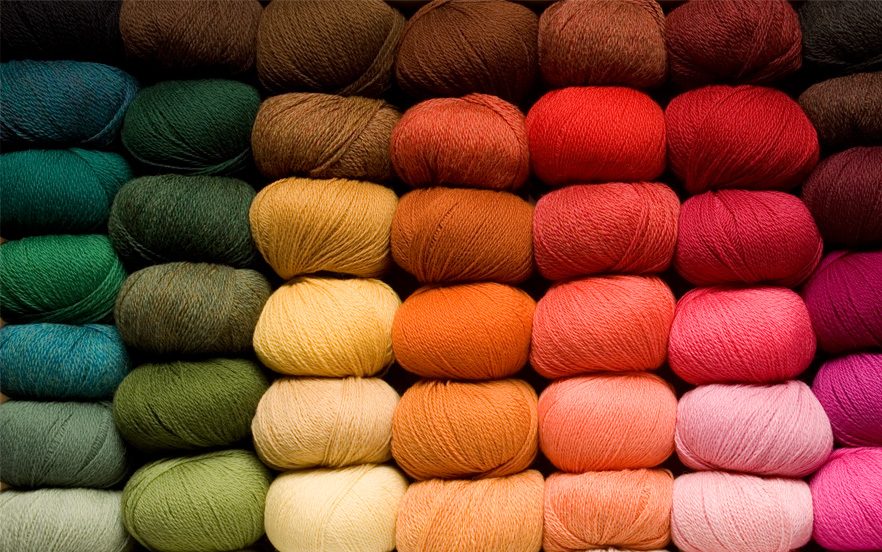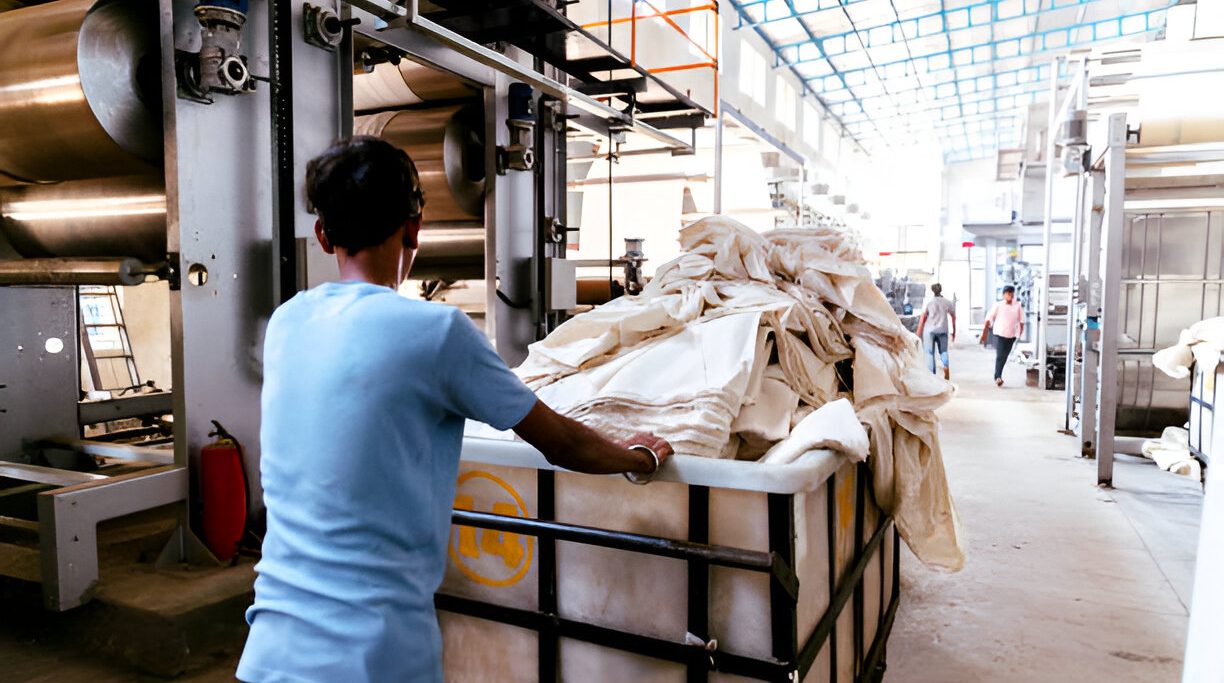Cotton Monk being one of the trusted yarn manufacturers and suppliers from India, we decided to write an overview of what goes in our spinning mills. Turning natural or synthetic fibers into yarn is not an easy process. It comprises a series of processes that decide the yarn characteristics like size, quality, texture, etc. Let’s walk you through the different steps of processing the fine quality yarns.
GINNING: It is the first stage of processing cotton. In this process, the cottonseed gets separated from the lint without causing any damage to the fibers. Earlier, it was performed by hand and other traditional machines such as the “Foot Roller” and its improvement the “Churka”. However, after the industrialization of textile process, three types of gins are extensively used- Saw Gins, Roller Gins, and Macarthy Gins.
- At first, the freshly picked cotton with its seeds and unwanted foreign particles like leaves, sticks, dirt, etc, are moved to the ginning industry.
- The next step is to measure the cotton’s moisture level, which determines the amount of heat to be supplied to open the fibers and, then it goes to air dryers to reduce the moisture content.
- Next, the cotton goes to the lint cleaner, where it gets rid of the dirt and the other unwanted foreign particles.
- The cleaned cotton is now ready for separation and goes to the gin stand, where the lint gets separated from the cottonseeds.
- The clean cotton is then hydraulically compressed into 500 pounds blocks called bales. Around 12 bales to 60 bales are processed per hour depending on the capacity of the machine.
After the ginning process, the bales are sent to the spinning factory.
BLOW ROOM: It is the first stage in the spinning process. As the name suggests, the process is performed through an air process. In the blow room, the compressed fibers are opened, cleaned, blended, or mixed, micro dust removed, and uniformly fed for the next process. The processes involved in blow room are:-
- Opening:- The opening function is performed through a bale opener. In this process, the compressed fibers are separated into small tufts with very less loss of lint. It works with the principle of holding the tufts of fibers with sets of teeth and drag them across another set of teeth.
- Cleaning:- After the opening of the fiber comes the cleaning process. The unwanted foreign particles are easily eliminated as the fibers are separated into small tufts. This results in fine quality cotton fibers.
- Blending or Mixing: In the spinning process, when varieties of cotton fibers are kept together, it is called mixing. For example, Mixing Indian cotton fibers and American cotton fibers. On the other hand, when different fibers of the same grades are blended, it’s called blending. For example, the blending of cotton fibers with polyester fibers or wool fibers with polyester fibers. The process helps in the cost reduction of fibers and yields good quality yarn.
Now, the fibers are uniformly fed to the next stage.
CARDING: Carding is the second stage of the spinning process. It is also called the heart of spinning. At this carding stage, the loose un oriented cotton fibers take up a textile form called slivers. The card is made up of a series of cylinders which are wire wounds. This wire has tiny teeth cut into it and each tooth serves to transport a small number of fibers through the machine. The wire-wound cylinders acting against one another in conjunction with the flats( a wire covered services close to the cylindrical wires) achieve carding’s main purpose to straighten a line and parallel the fibers. It also removes a significant amount of trash particles. The uniform sliver or the flat sheets are called laps, temporarily stored for the next process.
COMBER: Combining machine performs the following tasks:
- The process straightens the fibers again to arrange them parallelly.
- It removes a predetermined length of the short fibers from the long-staple fibers.
- The combining process eliminates the remaining trash in the fibers.
- The neps formed in the blow room process, are not completely removed in the carding operation. In the combining process, the neps either get straightened or removed.
- It improves the quality, strength, and texture of the yarn.
DRAWING: Drawing is the process of straightening a group of slivers by passing them through a series of rollers. Each pair of rollers rotates faster than the previous one. It is the last process of removing the impurities and improving the unevenness of the slivers. It plays an essential role in improving the yarn quality concerning strength, irregularities, and decreasing elongation at break. It produces suitable slivers to feed into the ring frame process (next step). Drawing includes two processes-
- Doubling:- Doubling is the process where one sliver is produced from two or more carded slivers. For example, six to eight slivers fed together to form a single sliver.
- Drafting:- Drafting is the process of straightening the crimped and hooked fibers present in the carded slivers, thus reducing the weight per yard of the fiber.
SIMPLEX: Simplex machine used in yarn manufacturing transforms the drawn slivers into roving. The roving is now fed into the ring frames to yield yarn. The operations performed in this machine are:
- Creeling is an important mechanism of the simplex machine. The slivers fed through the creel consist of rollers that drive them to the drafting system. The creel also has a sliver break stop motion that stops the machine immediately if any sliver breaks.
- Drafting reduces the size of the strands and makes them suitable for the ring spinning process.
RING SPINNING PROCESS:
- After the drafting process, a small twist is performed to strengthen the fiber strands before winding.
- Next, the building system shifts the roving on to the bobbin in a cone drum mechanism that moves the bobbin rails in the reverse direction to form conical shapes at both ends of the roving bobbin.
- The twisted roving is wound onto the bobbin and the package system of bobbins makes it handy and forwarded to the next process.
- The full bobbins are taken off manually or by machine and replaced by the empty bobbins.
CONE WINDING: This is the last process of yarn manufacturing. In this process, the bobbins wound onto large yarn packages called cones and shipped to the customers for use. Before shipping, all the spinning faults are removed by electric scanners and, auto splicing is done for the broken yarn pieces to remove the cotton knots, weakly twisted yarns, and other impurities.
Reach out to us here if you have any requirements of Yarns.



